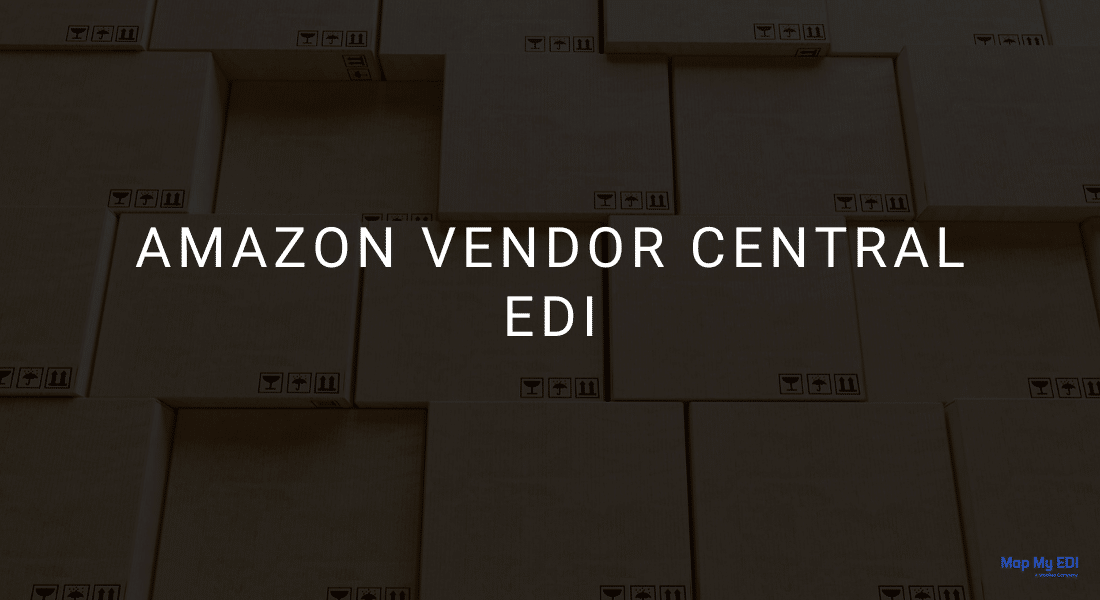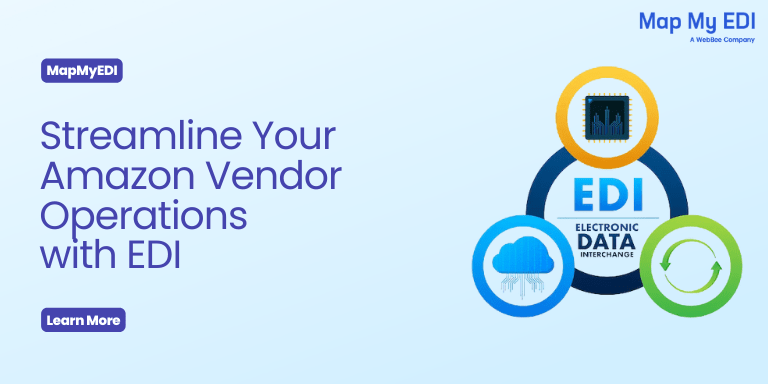Amazon Vendor Central EDI Ensuring Optimized Business Communication
If you are a supplier on an Amazon vendor central and is looking for a document processing option for the purchase of orders and another important document on the major marketplace, then Amazon Vendor Central EDI integration is the best available option for the purpose. Different to the seller central and devoid of an API, a supplier to a greater extent relies upon the Amazon seller central EDI.
In absence of EDI and API, a supplier relies upon the input data through the website by manual entry and carrying out the bulk data import/export by using the CSV files. However, EDI is an option with a suppler offered by Vendor Central to exchange data between businesses.
Amazon vendor central EDI offer facilities to easily accomplish and carry out the EDI for a supplier that otherwise is a difficult and highly specialized area of working. Many service providers offer API wrappers for the Vendor central to make custom development easier.

Benefits of an Amazon Vendor Central EDI
For a process management an EDI offers plethora of benefits to a supplier on a Vendor Central. After the proper integration of EDI with an Amazon Vendor Central Account a supplier enjoys the following benefits with his streamlined business process for the data exchange requirements.
- It refrain a supplier from the unnecessary burden of carrying out the manual order processing. After the EDI, the entire process becomes automated eliminating any chances of date error.
- Diminishes incidents of delayed or replaced Purchase Order Acknowledgements (POAs). This saves enough money for a supplier as Amazon Vendor Central charges a penalty for the wrong POA up to 1% of the total cost.
- Automate the entire process of sending invoices and order acknowledgement messages.
- Completely eliminates human error while creating Advance Shipping Notices (ASNs). Amazon charges around $5 and $150 for late ASNs.
- Link your Amazon Vendor stock decisions with the rest of your business.
Therefore, an Amazon EDI connection benefits a business by better streamlining business processes and freeing up a vendor’s team from the trivia task of making data entry manually. It is quite an essential process for a vendor that deals with high numbers of POs to avoid penalties and hefty chargebacks.

How do Amazon Vendors use EDI?
The answer to the question how an Amazon vendor can utilize the features of EDI or integrate it with his system depends upon his knowledge of the EDI. An apparent understanding of this can be described from the EDI (Electronic Data Interchange) interface. But at the same time a vendor is required to have substantial knowledge before implementing it with its vendor central account.

What is an EDI?
In a simpler language EDI (Electronic Data Interchange) is a typical type of data exchange between a client and a server. While at the business process for Amazon Vendor Central the EDI process is primarily being developed for the POs and Invoices.
It the more simplified language EDI is a process where data get exchanged between two servers through the data packages instead of e-mails and other attachments. These data packages get further translated by the receiving servers in a simple and the easier language by the translators. Not only Amazon it is also used other leading market places like Walmart, Wayfair and Tesco for the wholesale order management.
How do you set up EDI as an Amazon Vendor?
While getting into the details of setting the EDI as an Amazon Vendor, it is very necessary for a supplier to have the major EDI code that he can use with his account integration with Amazon for EDI establishment.
They are:-
EDI 850: Purchase Order
EDI 855: Purchase Order Acknowledgment
EDI 810: Invoice
EDI 856: Advance Shipping Notice
Therefore, a communication standard called AS2 (Applicability Statement 2) is used to transfer EDI messages in a secure and efficient way. Depending upon the requirement an Amazon Vendor can use the following methods to implement EDI.
The methods include:-
- No EDI connection: This type of data exchange process is used by the vendors that do have not any type of EDI connection. They simply exchange orders through the Amazon Vendor portal to accept and fulfill orders. It is an intensive manual process that takes 15-20 hours per week for businesses with large order volumes.
- The Single Message EDI Connection Type: The single message EDI connection can be done through the Purchase Order EDI 850 or Invoice EDI 810 message.
- EDI integrated with an ERP System: In case a vendor using, an elaborate and broader ERP like NetSuite or SAP, he can integrate all his EDI into ERP and process orders through ERP instead of his vendor portal.
- EDI connection into an OMS: This integration of EDI is offered in situations where a Vendor does not use an ERP and instead has multiple sales channels. Hence, he can use the EDI with his order management system.
In order to set up EDI as an Amazon Vendor one is required to follow the step after reaching Amazon Vendor Central the section
“EDI—->Self Service Setup”. The setup process follows as:-
- Enabling Global Settings: Under this procedure, a supplier’s system gets integrated with Amazon’s server. This step normally includes downloading a certificate to authenticate your server in order to create a secure, encrypted connection allowing a message to pass across it.
- Setting EDI Message According to EDI Code: After having access to the Amazon server then an EDI provider will carry out the testing and enabling each EDI message. The entire process begins with Purchase Order (EDI 850) and ends with Invoice (EDI 810).
How EDI can be used Amazon Vendors in other sectors as well?
With the help of EDI, an Amazon Vendor can accomplish and carry out the number of activities like uploading new products or managing an account statement. The EDI code 852 helps to update inventory list prices while managing a stock.
Points to keep in mind when establishing an EDI connection with Amazon Vendor Central
An EDI is very imperative for high volume business. In order to make an EDI connection successful and robust it is necessary for a business to focus upon the following points.
Business Objectives behind Implementing EDI
A company first of all should look at its reasons for implementing EDI with Amazon Vendor Central. The clarification on the points like saving time, reducing charge backs, removing human errors can be reason for integrating the EDI
Process of Stock Management
The stock management is another crucial point while selecting and implementing EDI. The effective integration of EDI with your stock management system, therefore, helps to effectively process the order and inventory management system.
Complications at Amazon Vendor Relationship
As every supplier runs his account differently with Amazon, therefore, it is quite natural therefore to adopt a distinguished policy to have an agreement according to their requirements with an Amazon EDI provider.
Summary
Thus, EDI integration with Amazon Vendor Central helps a business to smooth its Purchase Order and invoicing system, effectively.



